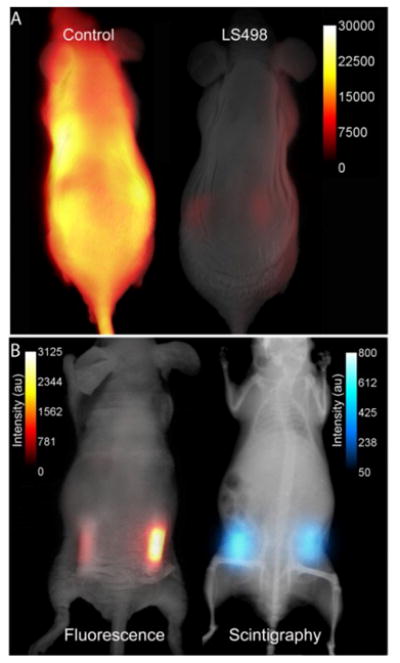Fig. 3.

Imaging of multifunctional molecular probe in mice. (A) In vivo distribution of LS498 (Right) and non-quenched control analogue (Left) in mice at 30 minutes after intravenous injection of the imaging agents. Fluorescence of the activatable probe was efficiently quenched by greater than 16-fold relative to the non-quenched control. (B) Multimodal fluorescence (Left) and scintigraphic (Right) imaging of a mouse with subcutaneously implanted tubes containing 64Cu-LS498 with BSA (left side) or caspase-3 (right side) 2 h after implantation. Tubes were implanted subcutaneously (about 1 mm) below the surface of the skin. Radioactivity is always “on” but fluorescence enhancement depends on the presence of caspase-3. The ratio of fluorescence intensity for the caspase-3 sample was 4.2 times greater than the control sample and this ratio increased to 5.6-fold after normalizing to radioactivity.
